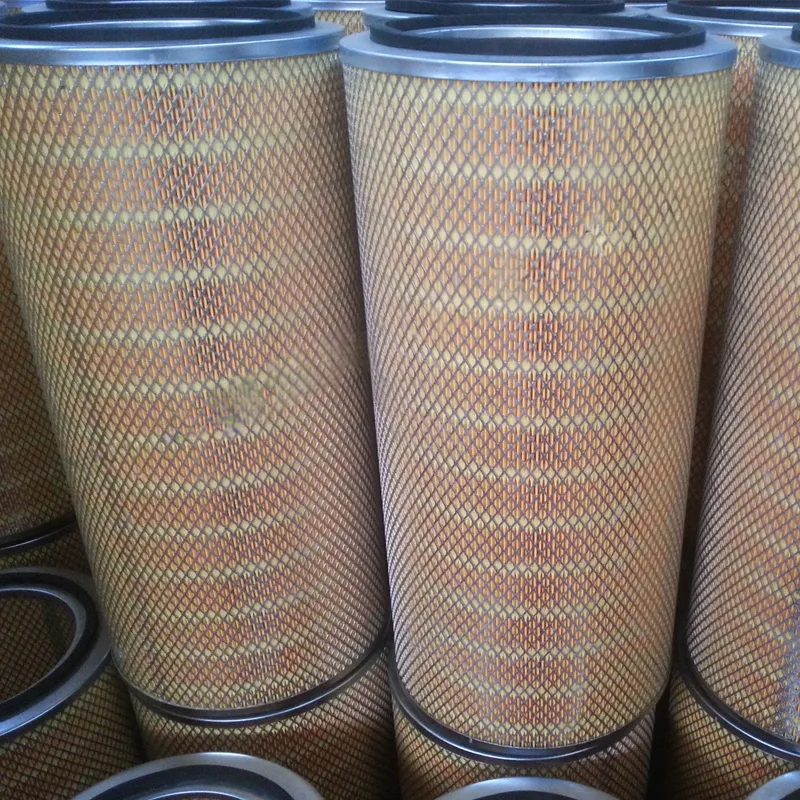 Tel:
+8615930870079
Tel:
+8615930870079
Dec . 07, 2024 11:04 Back to list
filter cartridge dust collector
Understanding Filter Cartridge Dust Collectors An Essential Tool for Clean Air
In various industrial applications, maintaining a clean and safe environment is a crucial aspect of operations. One of the most effective solutions for managing airborne particulates is the filter cartridge dust collector. This system plays a vital role in ensuring the air quality in workplaces, helping to protect both employees' health and the integrity of equipment.
What is a Filter Cartridge Dust Collector?
A filter cartridge dust collector is a type of air pollution control device designed to capture dust and other particulate matter from the air. It consists of a series of cylindrical filter cartridges, which are made from a variety of materials depending on the specific application and types of dust being collected. The process generally involves drawing contaminated air through the cartridges, where the dust is trapped while clean air is released back into the environment.
How Do They Work?
The operation of a filter cartridge dust collector can be broken down into several key steps
1. Air Inlet Contaminated air is drawn into the collector through an inlet. 2. Dust Collection As air flows through the cartridges, the larger particles settle at the bottom of the collector, while finer particles are captured on the filter media of the cartridges. 3. Cleaning Cycle Over time, the cartridges accumulate dust, which can lead to reduced airflow and efficiency. Most systems have an automated cleaning mechanism, often using compressed air, which periodically pulses through the cartridges. This dislodges the collected dust, allowing it to fall into a hopper for disposal. 4. Clean Air Exhaust After the dust is removed, the now-clean air is released back into the atmosphere or recirculated within the facility.
Benefits of Using Filter Cartridge Dust Collectors
The advantages of deploying filter cartridge dust collectors in industrial settings are numerous
- Improved Air Quality By effectively capturing dust and particulates, these systems contribute significantly to maintaining high air quality levels, which is essential for worker health and safety. - Enhanced Efficiency With reduced risk of respiratory issues among employees, companies can experience lower absenteeism and higher productivity. Healthy workers are more efficient and motivated in their tasks.
filter cartridge dust collector

- Energy Savings Many modern dust collectors are designed to be energy-efficient, consuming less power while operating at high efficiencies. Regular maintenance can further enhance their performance, ensuring that businesses remain cost-effective.
- Versatility Filter cartridge dust collectors can be used in a wide range of industries, from woodworking and metal fabrication to food processing and pharmaceuticals. They can be customized to meet specific needs depending on the type and volume of dust generated.
- Compliance Many jurisdictions require compliance with environmental and workplace safety regulations. Implementing a proper dust collection system helps companies meet these standards, avoiding potential fines and legal issues.
Choosing the Right System
When considering a filter cartridge dust collector, it's essential to evaluate several factors
- Type of Dust Different materials may require specific filtration media. Understanding the kind of dust generated in your processes will guide you in selecting the right cartridges. - Airflow Requirements Calculate the amount of air that needs to be filtered to ensure the system can handle your operational needs without sacrificing performance.
- Space Constraints The physical footprint of the dust collector is crucial in planning your facility's layout. Ensure that you have adequate space to install and maintain the equipment.
Conclusion
In conclusion, filter cartridge dust collectors are indispensable in modern industrial operations. They not only protect the health of workers by ensuring clean air but also contribute to operational efficiency and regulatory compliance. Investing in a quality dust collector is a proactive step towards achieving a safer, more productive work environment. By understanding their workings and benefits, businesses can make informed decisions that align with their operational goals and environmental responsibilities.
-
Types and Applications of Air Filtration CartridgesNewsJul.28,2025
-
The Role of Gas Turbine FiltersNewsJul.28,2025
-
Mastering Air Filter Cartridge UseNewsJul.28,2025
-
Advanced Turbine Filters for Modern Gas TurbinesNewsJul.28,2025
-
Cellulose Air Filter Cartridge Advantages in Dust FiltrationNewsJul.28,2025
-
Cellulose Filters for Air Particle ReductionNewsJul.28,2025

 Email:
Email:





